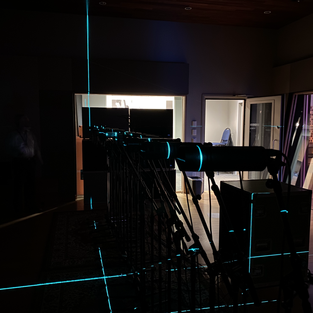Sweetwater Project Reveal - 4/23/2021
- Alex Kerns
- Apr 23, 2021
- 3 min read
Like many of the things I was helping with in my internship at Sweetwater Studios, this microphone shootout had to be kept completely confidential until the publishing of its article. On April 20th, newly made friend of mine Lynn Fuston published his newest work, "22 Podcast Mics Compared – Take a Listen!" in which several microphones typically used for podcasting were put head-to-head in an extremely precise and scientific shootout. I'm proud to say that my name can be found in the credits of this article, as I had put my small share of help into making this article a success.
Before being asked by Lynn to help with this project, I had only done a few shootouts, none of which were this extreme and accurate. In the past, I've done shootouts were I took only a handful of mics and placed them remotely near the sound source and hoped for the best. However, this time Lynn showed me how a real engineer does a good shootout. To start, he came in with a giant cardboard box packed with about 20 microphones, most still in their original packaging. I got to work unboxing each mic, and keeping the packaging in good condition (these mics were "pulled" from the distribution center, where you can borrow gear for projects, but have to end up going back in a condition that can still be sold).

After getting all the microphones unboxed and on stands, we patched them into our portable rack with 3 Dante-enabled Rupert Neve RMP-D8 preamps. Then, we used self-levelling lasers such as the Huepar seen in this photo. By using these lasers, we could make sure that each capsule within every microphone was at the exact same hight and parallel and in line with one another. By doing this along with placing a laser on the ground parallel to the line of capsules, we got a fairly close-to-identical distance between the talent and the microphone every time. This method allows the performance to be as close to identical every time as possible, and the proximity effect for each microphone will be indicative of its individual tendencies, rather than the proximity of the talent. Here are some photos of what it looked like after we got all the microphones lined up to the lasers:
Once the microphones were all set up to as close to perfect location as we could get them, it was time to calibrate the gain for each one of them. To carry out this task, an Auratone 5C Super Sound Cube was mounted on a giant Starbird Triad-Orbit microphone stand, then a 1kHz tone was sent through the A2-30 power amp at the same exact level for each microphone. By doing this, we essentially got identical volume through each mic by setting the gain where the tone would read the exact dB level every time. It's also important to note that by mounting the Auratone cube on the Starbird stand, we could easily roll the speaker from mic to mic, and quickly re-position it every time. To make this a lot easier, we took another Huepar laser, and lined the speaker and laser up so that if the speaker was in the right position, the "+" of the laser would hit the center of a "+" we made out of white tape on the speaker. Here's what it looked and sounded like:


I'd never seen such precision in the studio before, and it honestly invigorated my love for audio. This is the kind of stuff I was always interested in and had always wanted to do, but never had the resources or means to do it. Finally now I had a little taste, and I loved it!
The rest was super simple: the two talents came in and spoke the same passage into each microphone with as close to the same volume and tone as possible. At the end of the day, this article will surely help many people determine which podcasting microphone would be best for them, especially if this article gains even a portion of the popularity of one of Lynn's past articles: [The Ultimate] "Vocal Mic Shootout". In the future, I hope to work with Lynn again, as he is a fantastic and smart engineer who creates some truly inspiring content. This experience as a while was certainly something that I'll be keeping in my memory throughout the rest of my career.
Coming up soon, I've ordered a Mini-me Chorus guitar pedal kit from Pedal Parts and Kits, who uses PCBs from GuitarPCB.com. I'll be building this pedal soon, and most likely another DIY microphone in the near future. Stay tuned!


















Comments